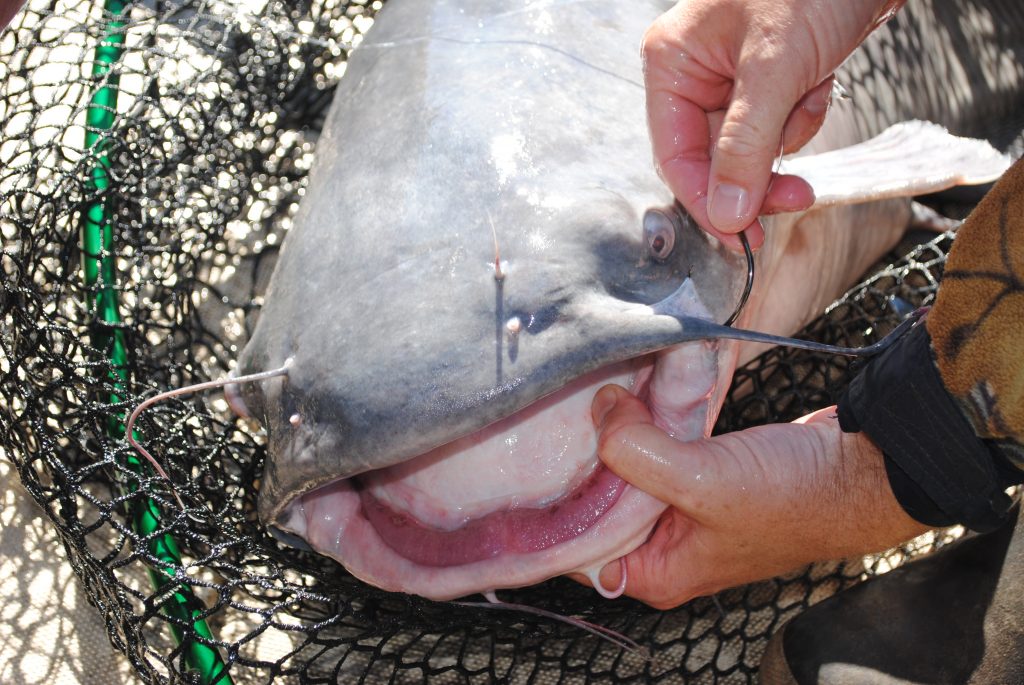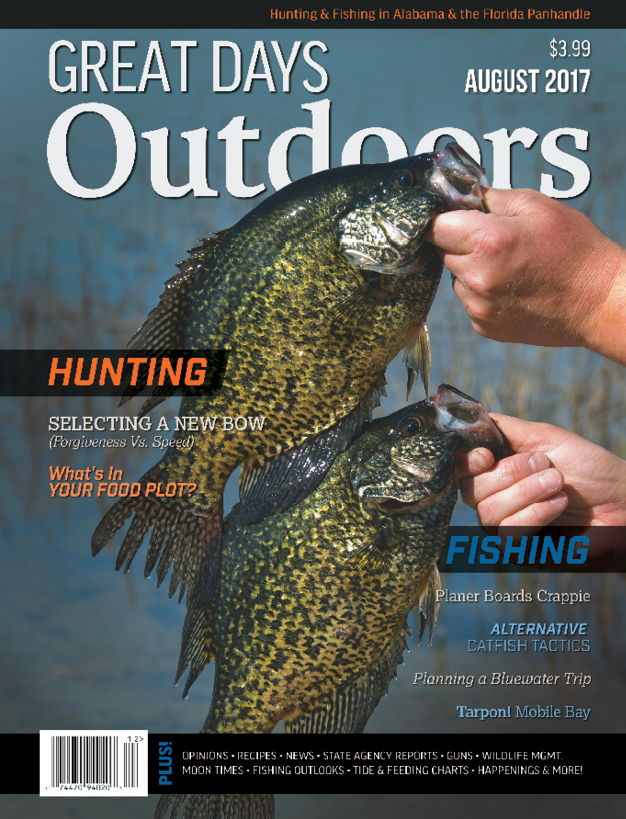Fishermen go to great lengths to put fish in the boat. Normally, they achieve success by practicing techniques and presentations established by repeated use. Bass and crappie fishermen look to their old reliables, stubbornly adhering to their fishing history. And when it comes to catching catfish, catfishermen are no different. They too follow established rituals, soaking skipjack steaks, shad guts or chicken livers in efforts to fool Mr. Whiskers.
Success is not always assured, however, and those times arise when something different is needed. For those who pursue catfish, some of the alternative methods are obvious; others might take a bit of mindset adjustment.
In fact, many catfish experts surveyed for this story responded with a blank stare. A regular response about what they do differently to catch catfish went something like this, “No, I pretty much do the same thing all time.”
One north Alabama guide who continually expands his fishing repertoire is Brian Barton of Muscle Shoals. Barton is one guide who is not afraid to try something different to better suit his needs and those of his clients.
“Most people just want to catch fish,” Barton once told me. “Some want to catch big fish. Others just want fish to eat. Then every once in a while, along comes that client who wants to do something a little bit different.”
The alternative methods can be practiced with rod-and-reel in hand or with various other approaches. In the right situations, all can be highly effective.
Luring Them In
Catching catfish comes with many preconceived ideas. One such notion is that some type of bait is needed to catch catfish, but the lack of bait doesn’t automatically negate a successful trip. An innovative angler can lure them in.
Three lures stand out for producing catfish on a regular basis – spoons, jigs and underspins paired with plastics. Barton has long used a simple spoon to catch catfish, usually eating-sized channels or blues up to about five pounds. Great Days Outdoors executive editor John N. Felsher actually caught a 36-pound blue on a spoon while fishing with Barton, the biggest that the guide has ever witnessed caught on the small lure.
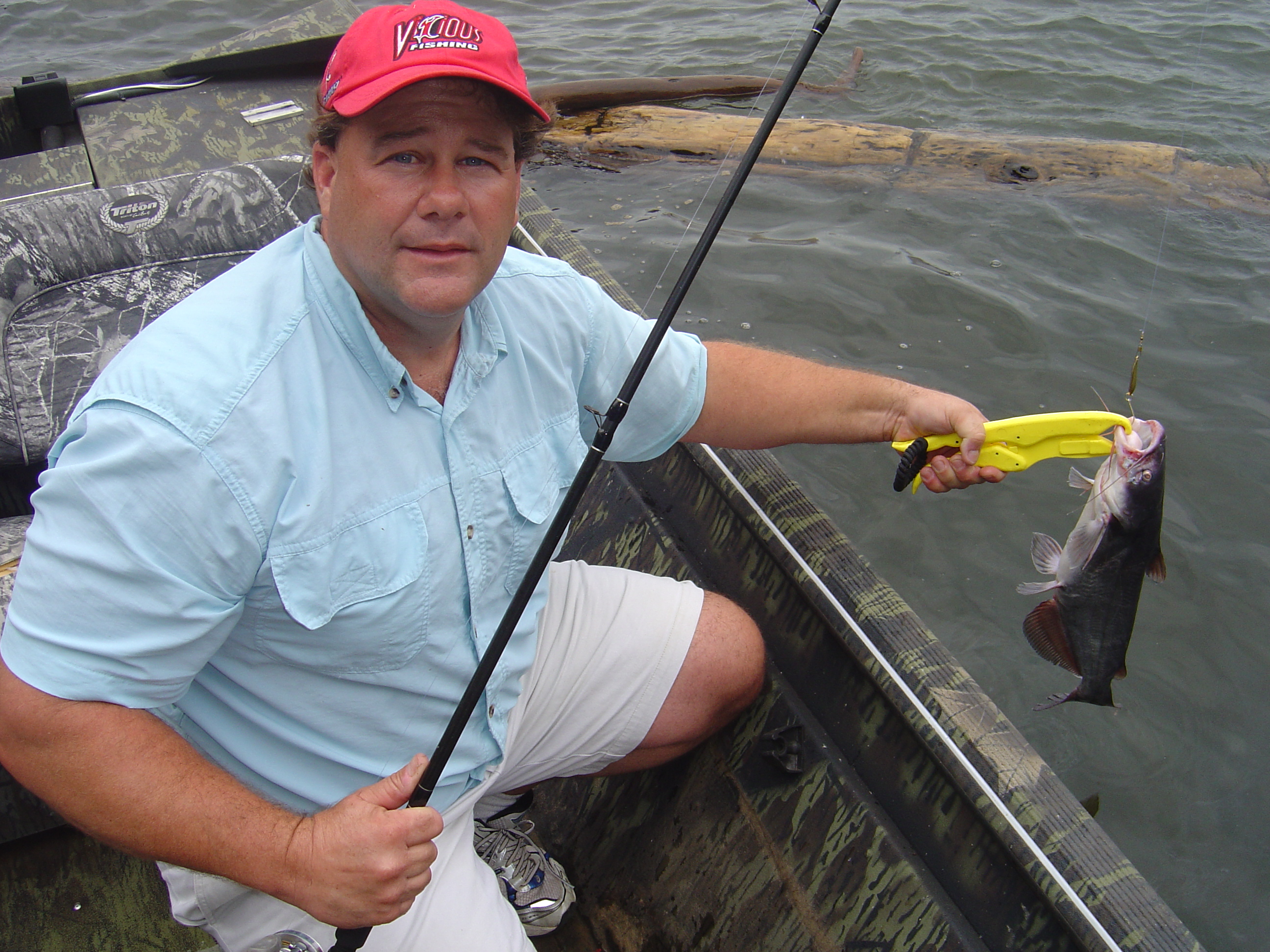
“Many people don’t like catfishing because they find it boring to throw out bait and hold the rod waiting for a bite,” Barton said. “By incorporating the spoon, you’re actually casting the lure as you would for bass or crappie. You have action and it catches fish effectively, sometimes just as well as throwing a piece of bait out on the bottom. At times, it’s even a little more effective (than bait) if the fish are really aggressive.”
Barton prefers a red-and-white Eppinger Daredevle spoon and replaces the treble hook with a Number 3 plain shank model to avoid snags. The flash of a gold spoon is a good change-up in dingy water. If a customer simply wants small fish to eat, Barton occasionally uses the same small Foley fluted spoon used to catch skipjack.
To further contrast with traditional approaches, which most often involve heavy tackle, Barton fishes the spoons on medium spinning tackle with 8-pound Vicious monofilament line.
“If you’re one who might get your feelings hurt by breaking off, you might want to bump up to 12-pound, but I like the fight,” Barton said.
Another alternative tactic for Barton comes from the world of crappie fishing. Pickwick Lake legend Roger Gant perfected the art of side pulling for crappie, which involves placing a trolling motor at the midpoint of a boat and “side pulling” over structure or a drop rather than trolling straight.
“I was taking what I had learned from Roger Gant and pulling for crappie one afternoon,” Barton said. “I got into the blue catfish and couldn’t get away from them. Later on, a light bulb came on. Why couldn’t I target catfish by side pulling in the same way that I had been doing for crappie?”
Barton upped his jig size, relying on a red and white Mister Twister Striper Lightnin’ model of at least an ounce and tipping it with a small shad or cut bait.
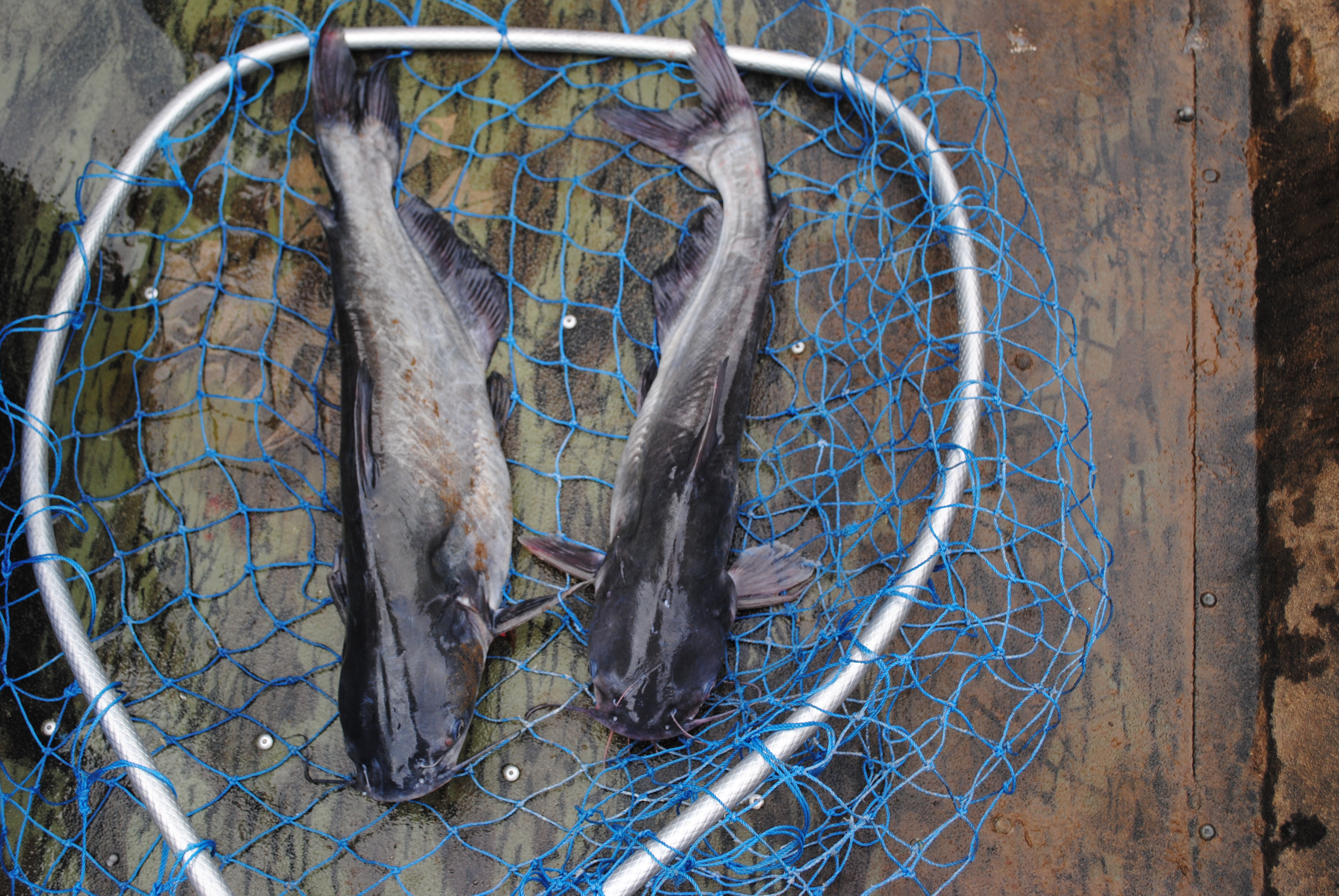
“You can catch them one after another with it,” Barton said. “Like the spoon, it’s not a trophy deal. It’s just for someone who wants fish for supper or someone who just wants to catch a bunch of fish.”
From personal experience, an underspin type of jighead paired with a swimbait or fluke-style bait can be highly effective. An underspin is a traditional jig head with a small willow-leaf or Colorado blade spinner (or two) molded into the bottom.
Like many situations involving lures and catfish, my first catches happened by accident. However, I soon learned that a Fish Head Spin combined with a white pearl or albino Zoom Super Fluke regularly fools blue catfish, especially when they are feeding aggressively.
Skipjack Variations
For trophy catfish along the Tennessee River, some cut of skipjack is the ultimate bait. Fishermen use just about every available part, most notably the head and the body.
A little innovation, however, can fool fish when the normal presentation fails. Tuscumbia fisherman Richard Woodruff fishes the normal cuts of skipjack, but he also regularly tries something a little different. He cuts a slender skipjack fillet, leaving the skin and scales intact.
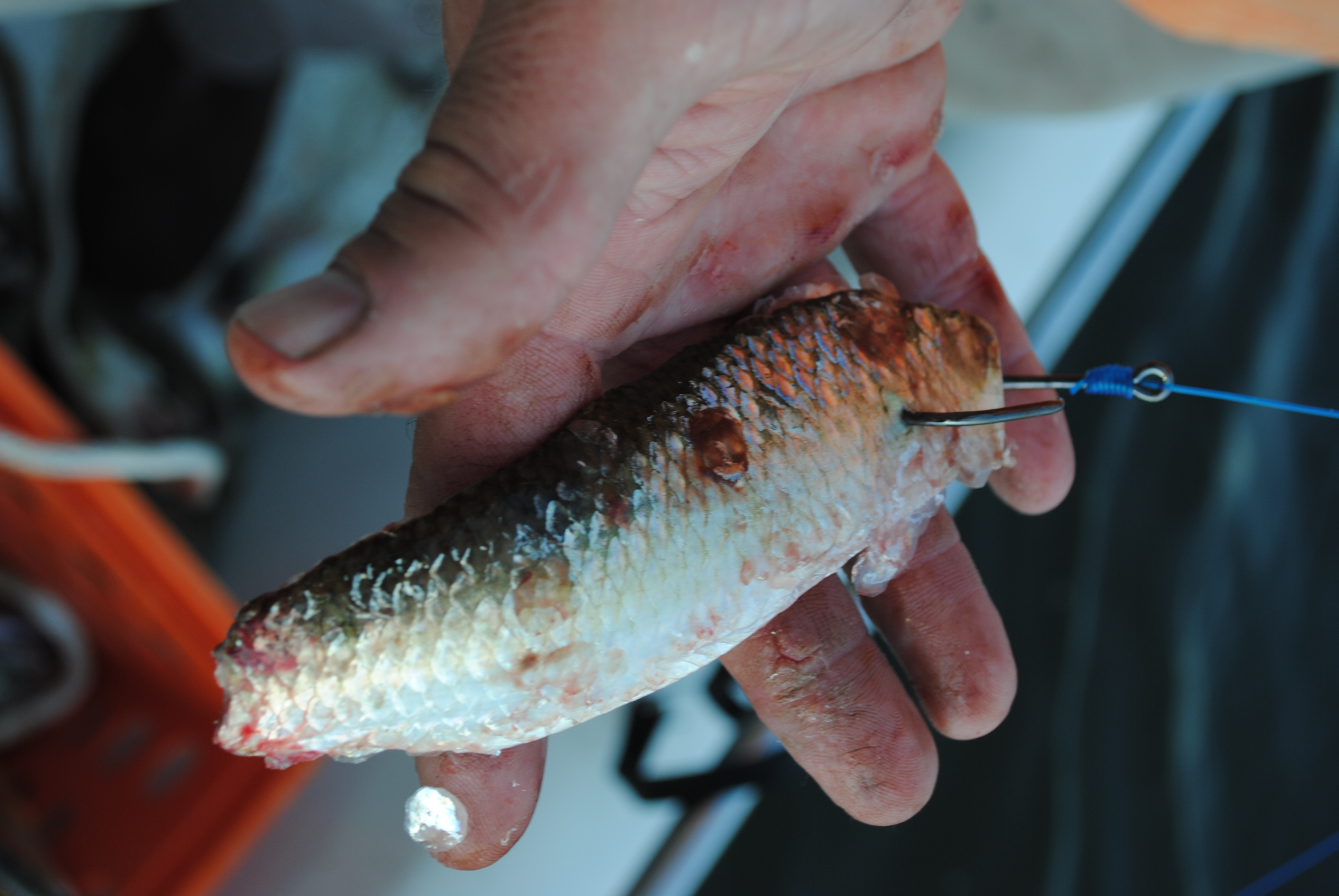
Woodruff runs a circle hook through the end of the fillet, which is usually about four to eight inches long and about an inch wide. Whether fished on a weighted rig near the bottom or on a drift line, the fluttering fillet is an ideal alternative to the standard head or steak of a skipjack.
“I like the fillet, especially on a drift line,” said Tennessee River guide Mike Mitchell . “You get really good action on the drift line. It definitely provides all the good qualities of skipjack with a little different look.”
While skipjack use is prevalent along the Tennessee River, the B’n’M tournament team from Columbus, Miss., Joey Pounders and Jay Gallop, relies heavily on live bait. They catch big gizzard or threadfin shad in a throw net and keep them alive in a bait tank.
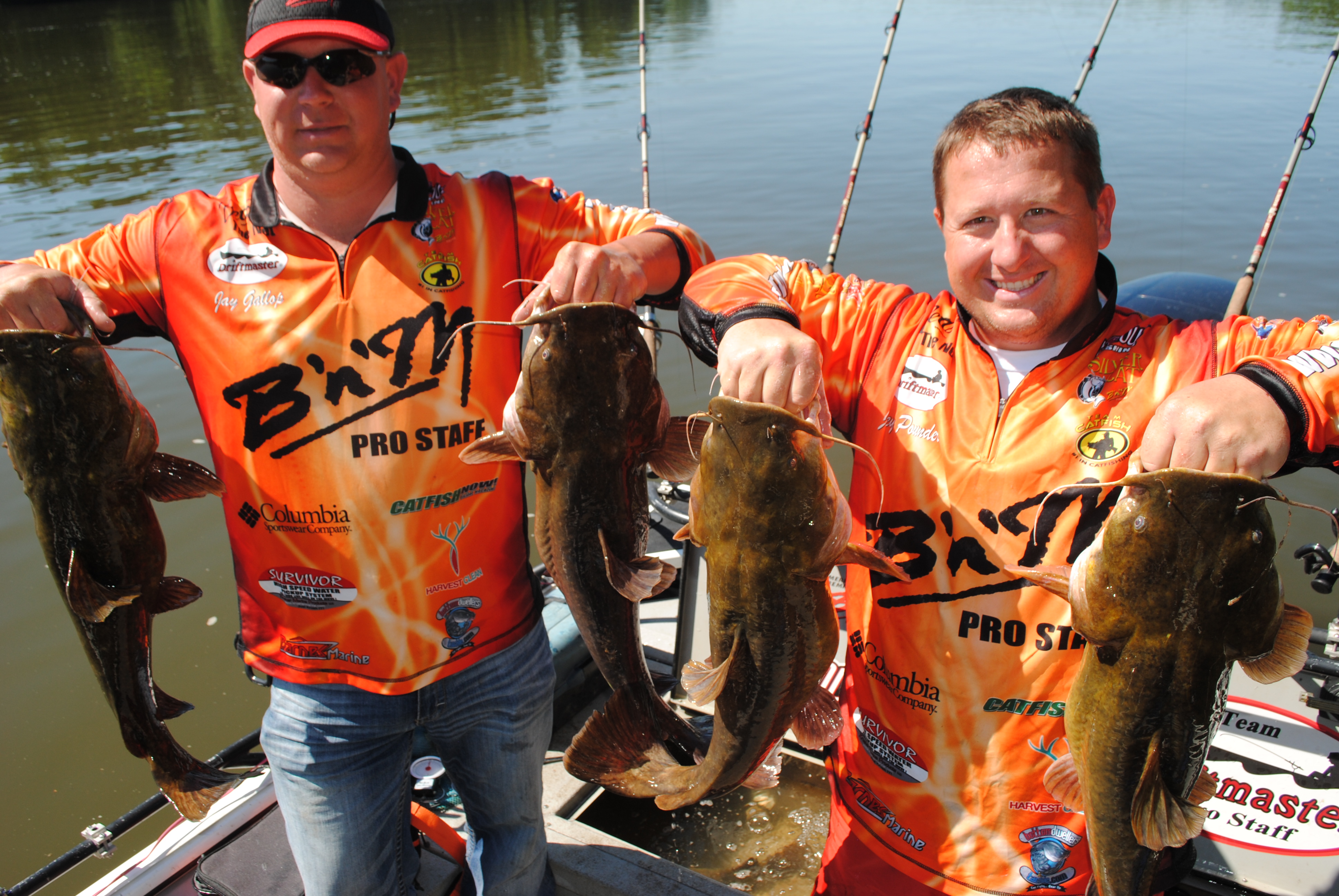
“It’s a little bit different approach although it’s something we’ve always done,” Pounders said. “Most people don’t want to go to the trouble of keeping bait alive. If everyone is fishing cut bait, usually some type of skipjack, the live shad provide a different look. We’ve had some success in tournaments when others didn’t have live bait.”
The live bait is especially effective on flatheads, which definitely prefer fresher food than blues or channels. In addition to shad, flatheads also love bream, which must be caught by legal hook-and-line techniques even when intended for bait. Any bream caught in a throw net must be returned to the water immediately.
Other nontraditional baits come from commercial fishermen. Once numerous in Alabama, they depended on regular catches for their livelihood. Even if regular bait was not available, the commercial fishermen still had to produce. They turned to such nontraditional bait as soap. On a regular basis, I’ve watched trotliners bait with cubes of Ivory soap.
I’ve also seen them use an even more unusual alternative to standard bait, a short segment of a trotline with one end frayed. One bright commercial man thought up the idea that the frayed trotline, about 1.5 inches long, looked like a willow fly. He inserted a small j-hook through one end and frayed the other, catching boatloads of small blue catfish with the rig in the summer when hatches began. However, he later discovered the trotline segments caught fish year-round and used them in all seasons when his regular bait got scarce.
Opposites Attract (Catfish)
If the catfish bite turns tough, think opposite – shallow versus deep, night versus day or winter versus summer.
Fishing deep for catfish is one of those presentations that will always be practiced, probably for good reason. Catfish, especially the big ones, like a deep-water environment.
That fact does not mean that they are forever found deep. Woodruff practices a technique that produces shallow-water fish, especially in the fall. Catfish love wood. Woodruff targets stumps, root balls and laydowns in shallow water. Shallow is relative, but I saw him hook and land a 50-pound blue from two feet of water on the upper end of Pickwick Lake.
The shallow presentation is especially effective if current is involved, which is frequently the case on most major rivers in the state. If the current positions baitfish in shallow water around wood, the catfish will likely follow. Catfish can also be found shallow at night, leaving their deeper daytime haunts and roaming long distances over shallow feeding flats.
Actually learning the nighttime habits of catfish is another opposite approach. While there is nothing unusual about fishing for catfish at night, really refining after-hours presentations is a good way to load the boat and avoid the annoyances (heat, jet skis, etc.) of fishing during the day.
Mitchell points out another advantage of fishing at night.
“I don’t really target flatheads most of the time, but I still catch some with my regular techniques,” he said. “If I really wanted to catch flatheads, I would probably fish more for them at night. They are nocturnal predators and are much more active at night than in the daytime.”
Mitchell also adheres to another idea that runs contrary to traditional thoughts about catfishing. Most people associate catfishing with hot summer weather, either day or night. Mitchell likes the winter, especially for giants.
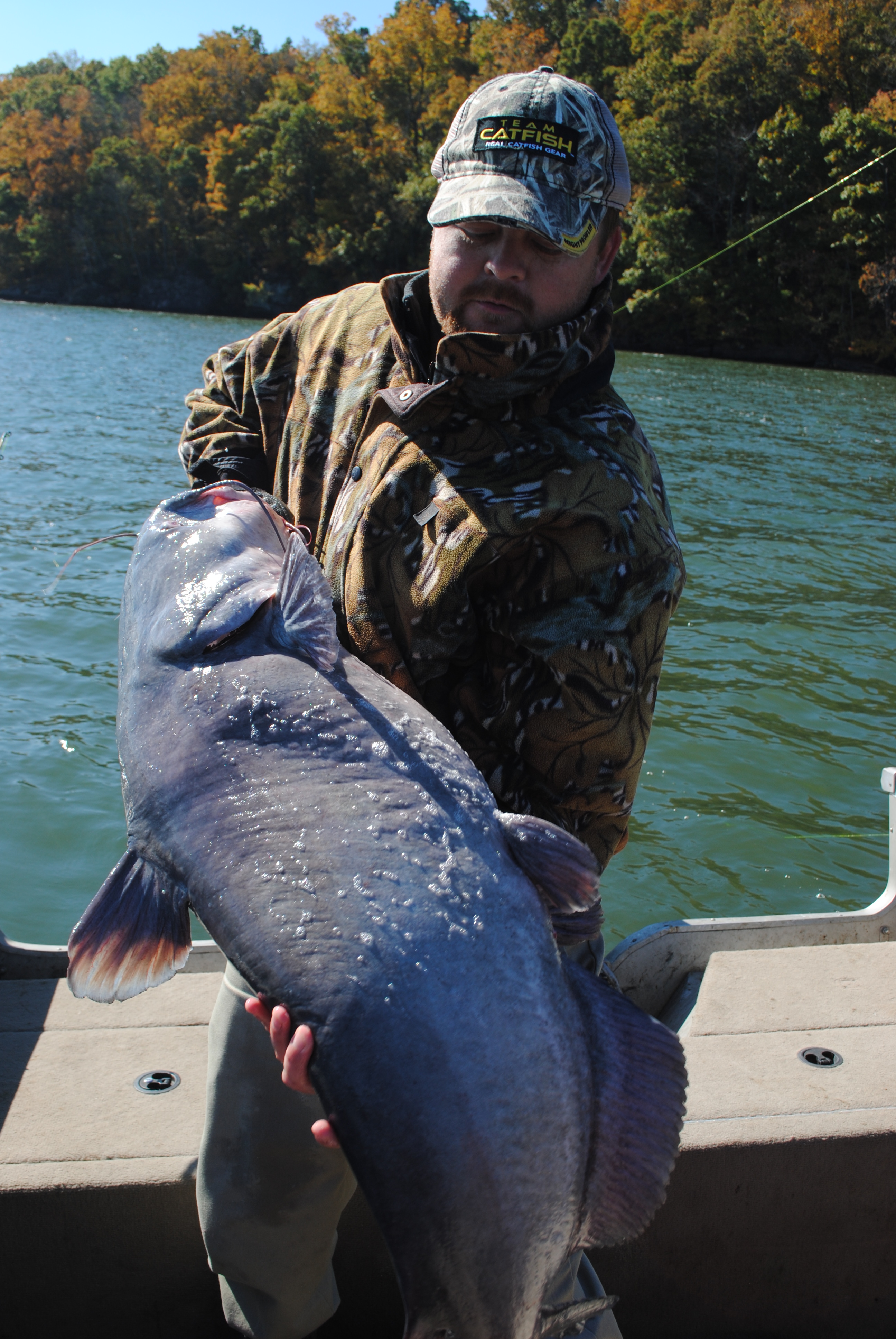
“Get out there on one of those slightly warmer, drizzly winter days, and your chances of catching a fish of a lifetime are better than just about any other time of the year,” he said. “Most people don’t like to fish when it’s cold, but your chances of catching a trophy fish are definitely better in the winter months.”
Fly-fishing for Catfish
I’ve caught catfish on the long rod with two approaches, one on purpose and the other purely by accident.
Blues are frequent guests in the streams that I wade in north Alabama. I use that terminology because the catfish will literally mill around my feet in certain spots if I stand still long enough.
After experiencing the catfish-around-the-feet phenomenon on more than one occasion, I decided to try to catch a few. I floated an array of nymphs and wet flies without success and decided to try bait. That was the ticket.
I added an extra-long leader to my fly line and threaded a red worm on a Number 1 circle hook. On my next trip, the same school of blues that ignored the traditional subsurface fly-fishing options inhaled the live bait. The result was a good fish fry from the dozen or so catfish ranging from about a half-pound to two pounds that I had caught.
I have managed to duplicate this presentation a couple of times since that initial success. The situation does not arise on every trip to a local stream. The key is knowledge of which pools the catfish frequent. While any type of tackle would probably suffice for this alternative method, I like the fight on the fly rod. Plus, I pretty much exclusively fish streams with one.
My other fly rod experience for catfish happened one magical summer evening without any intent on my part. I was fishing around a willow fly hatch just above Wheeler Dam on the Tennessee River, catching the standard bream-bass mixture with an occasional white bass thrown in. The white bass were somewhat unusual, but the fishing got even crazier as the sun dropped below the dam.
In the low-light conditions, I began to notice some rolling slashes at the bugs on the water. The slashes made a different sound and looked different from the slurps of bass and bluegills.
I had already stowed my fly rod and was about to leave for home. However, I retrieved the rod from the locker and made a cast. The response was a heavy weight on the end of the line, definitely bigger than a bream, but not fighting like a bass.
When the fish came into the boat, I did a double take because I had never caught a catfish while fishing around willow flies. I’ve actually never found them around a hatch since, but for about an hour that evening, the little blues slurped up my poppers like they were a regular part of their diet.
Leave the Rod At Home
Limb lines, jug fishing, trotlines and noodling are standard in catfishing, but a little variety in these traditional approaches can make a good technique even more effective.
Noodling, sometimes called grappling, normally involves sticking one’s hands into places that catfish hide – logjams, crevices in bluffs, under stumps, around the edges of boat ramps, even under piers and docks.
Noodling comes with its own inherent dangers. Snakes and turtles frequent the same areas as catfish at times, and a dangerous encounter with something other than a catfish is always a possibility.
“I’m not sticking my hands anywhere that a cottonmouth might live,” said Rodney “Big Mo” Williams of Red Bay.
Just in case you think Williams is a wimp, consider that he stands 6-foot, 8-inches tall and weighs north of 300 pounds. He can hold his own. His alternative for noodling? He builds his own catfish habitat. Using rough lumber, Williams and his band of noodlers build 48- x 30- x 12-inch boxes that serve as perfect homes for spawning catfish. A hole on one end allows even the biggest catfish to enter.
Before spawning season arrives on northwest Alabama lakes in late spring and early summer, Williams places the boxes on sloping banks 4- to 6-feet deep and returns to them at the peak of the spawn. The resulting catch is a mix of blues and flatheads that averages “about 25 pounds each,” Williams said.
Plenty of catfish are caught jug fishing as well. Tony Adams, who calls Lake Eufaula home, has perfected the craft of jug or noodle fishing, but with a twist. He catches fish in much deeper water than the average jug fisherman does. Most jugs (plastics bottles or segments of swimming noodles) come equipped with anywhere from six to about 15 feet of line. For Adams, 15 feet is simply not deep enough on Lake Eufaula, and he ties on as much as 50 feet of line to some of his rigs. The longer lines reach those catfish suspending on river ledges where the water plunges to 80 feet or more.
“They are actually more fun to catch on the longer lines and give you a little longer fight,” Adams said.
Catfishing is what we make of it. Whether we stick to our time-honored techniques and baits or whether we venture outside the box a bit, catfish are readily available across the state. The next time out, try something different. A surprise might be in store because catfish are not as set in their ways as fishermen.
This article first appeared in the August 2017 print issue of Great Days Outdoors Magazine. For more great hunting and fishing content for the deep South, subscribe to Great Days Outdoors print and digital editions or click the image to download this issue.

